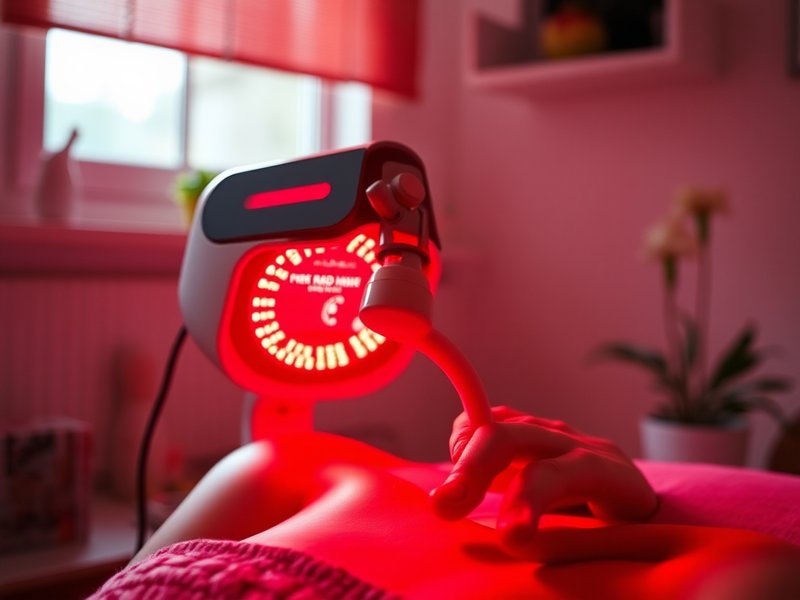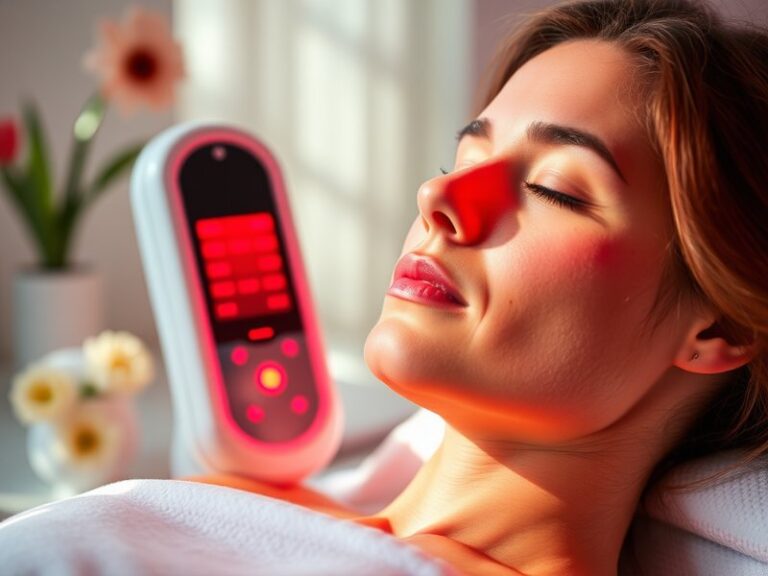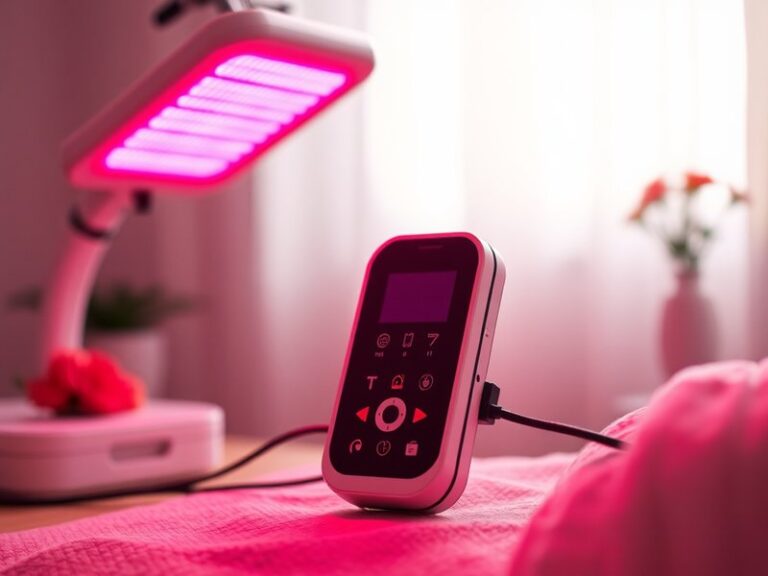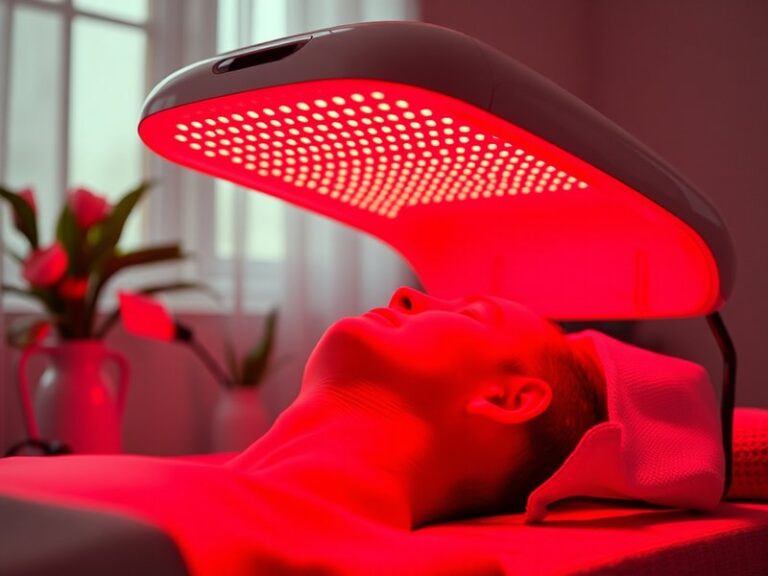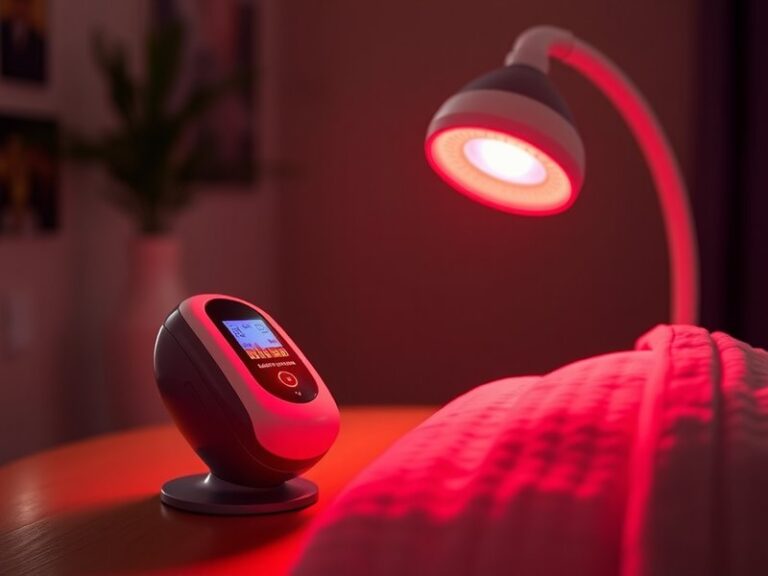Is Red Light Therapy Pseudoscience?
Is Red Light Therapy Pseudoscience?
Is red light therapy a genuine therapeutic approach or just another trend in pseudoscience?
In this article, we will explore the validity of red light therapy, its benefits, potential applications, and whether it stands the test of scientific scrutiny. We’ll also discuss common misconceptions and alternatives, allowing readers to form an informed opinion on this evolving subject.
Key Takeaways
- Red light therapy utilizes low wavelength light to potentially promote healing and reduce inflammation.
- Scientific evidence supports some effectiveness in specific conditions, but claims of universal benefits should be approached with caution.
- Alternatives to red light therapy exist that may also provide healing benefits, including traditional methods and newer technologies.
What is Red Light Therapy?
Red light therapy (RLT) involves the use of specific wavelengths of light, particularly in the red and near-infrared spectrum, which penetrate the skin to promote biological processes. This therapy is also known as low-level laser therapy (LLLT) or photobiomodulation.
The mechanism behind RLT suggests that when the skin absorbs these wavelengths, it stimulates mitochondria in cells to produce more ATP (adenosine triphosphate), the energy currency of cells. As a result, it may help in tissue repair, reduce inflammation, and alleviate pain.
RLT is utilized in various settings, including clinical environments for wound healing, pain management, and even in some beauty treatments aimed at skin rejuvenation. However, the discussion surrounding its efficacy often leads to questions of scientific credibility.
What are the Benefits of Red Light Therapy?
The following benefits highlight the potential therapeutic impacts of RLT, though it’s crucial to note that results may vary based on individual conditions and treatment protocols.
Promotes Wound Healing
Research indicates that RLT can accelerate wound healing by enhancing cellular repair processes. A study published in the journal “Photomedicine and Laser Surgery” found that patients treated with RLT saw improvement in wound healing times compared to those who received standard care.
Reduces Inflammation
The anti-inflammatory properties of red light therapy may aid in conditions such as arthritis or tendonitis. Studies have demonstrated that RLT can reduce inflammatory markers, leading to decreased pain and improved function in affected areas.
Enhances Skin Health
Various beauty treatments leverage RLT for its anti-aging benefits. By stimulating collagen production, it may improve skin texture, reduce fine lines, and enhance overall appearance. Many skincare clinics have started incorporating RLT into their services.
Pain Relief
RLT has shown promise in alleviating pain associated with conditions like chronic back pain, joint pain, and muscle soreness. Patients often report a reduction in discomfort after treatment sessions, contributing to overall improved mobility.
Improves Muscle Recovery
Athletes frequently use RLT as a recovery tool, with studies suggesting that it may enhance recovery time after intense workouts by reducing muscle soreness and inflammation.
Is it Possible to Use Red Light Therapy at Home?
Home use of red light therapy devices has gained popularity, allowing individuals to incorporate it into their daily routines. Many manufacturers offer a range of consumer devices designed for convenience.
What are the Advantages of Home Use?
Using RLT at home provides several perks, including:
- Convenience: Home devices allow for treatment at any time, eliminating the need for appointments.
- Accessibility: Available to a broader audience, making it easier for individuals to explore its benefits.
- Cost-effective: While initial investment might be higher, long-term use can be more economical compared to repeatedly visiting a clinic.
What are the Disadvantages of Home Use?
However, there are challenges to consider:
- Efficacy: Some home devices may not emit the same power or wavelength as professional equipment, potentially reducing effectiveness.
- Knowledge Requirement: Understanding the correct usage and treatment duration is crucial for optimal results.
- Safety Concerns: Like any device, improper use can lead to skin irritation or other adverse effects.
What are the Things to Consider Before Using Red Light Therapy?
Before beginning RLT, several factors should be considered for safe and effective treatment.
Consult a Healthcare Professional
Always consult with a healthcare provider to determine if RLT is appropriate for your specific condition or circumstances.
Understand Product Specifications
Research the specific device you plan to use. Key features to consider are wavelength, intensity, and manufacturer reputation to ensure effectiveness.
Be Aware of Treatment Guidelines
Follow the recommended treatment protocols regarding duration and frequency to maximize benefits and minimize potential risks.
Consider Your Skin Type
Individuals with certain skin conditions, such as photosensitivity, may need to approach RLT cautiously. Consult with a dermatologist if unsure.
What are the Alternatives to Red Light Therapy?
For those exploring other therapeutic options, consider the following alternatives:
Read the full story Daily Red Light Therapy?
Cold Laser Therapy
Similar to RLT but uses different wavelengths to promote healing and pain relief, primarily in physical therapy settings.
Ultrasound Therapy
This method utilizes sound waves to promote tissue healing and reduce pain, often used in physical therapy practices.
Massage Therapy
A well-known method for alleviating pain and improving muscle function, it’s an alternative that can also aid in recovery.
Acupuncture
An established practice in traditional medicine that involves inserting needles at specific points, which can promote healing and pain relief.
See our thorough exploration of Do they work?
Conclusion: Is it Recommended to Try Red Light Therapy?
Red light therapy presents an interesting option for those looking for non-invasive treatment modalities. While evidence indicates that it may be beneficial for specific applications, it is essential to approach it with informed caution. Consulting healthcare professionals and understanding the limitations of technology will help maximize the potential advantages of RLT.
Frequently Asked Questions
Is red light therapy safe?
Yes, red light therapy is generally considered safe when used as directed. However, consulting a healthcare provider before starting any new treatment is advisable.
How long does it take to see results from red light therapy?
Results can vary; some individuals report improvements after a few sessions, while others may require several weeks of consistent use to notice significant changes.
Can red light therapy help with weight loss?
Some studies suggest that RLT may assist in fat reduction, but it should be noted that it is most effective when combined with a healthy lifestyle that includes diet and exercise.
Do I need to wear goggles during red light therapy?
It’s recommended to wear goggles or protective eyewear during treatments to shield the eyes from intense light, especially if using high-powered devices.
Can anyone use red light therapy?
While many people can benefit from RLT, those with specific medical conditions or concerns, such as pregnancy or cancer, should consult a healthcare provider for personalized advice.
